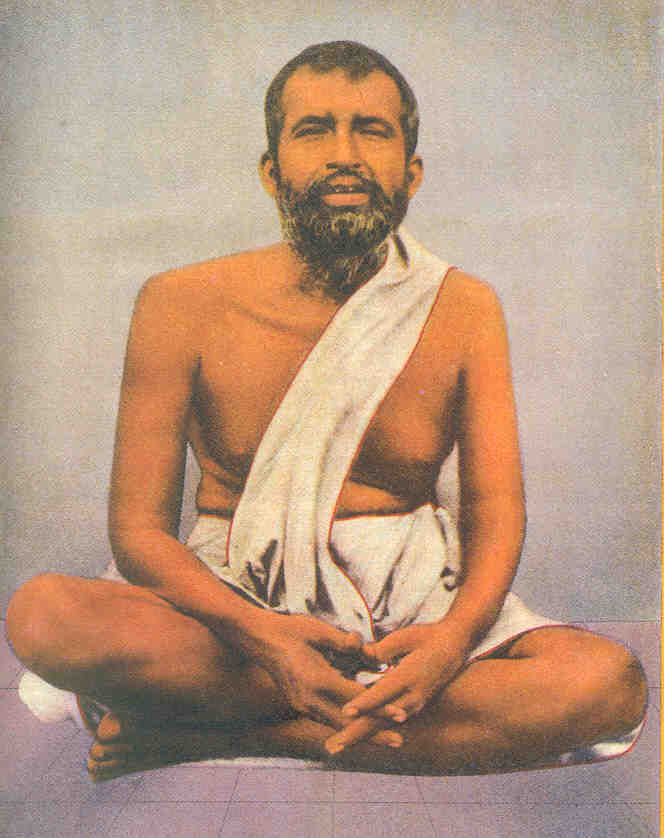All About Bharatiya Sanatana Dharmam otherwise known as Hinduism : 18. Continued- Swami Sivananda
================================================
Monday, 05 Jun 2023. 05:30.
Chapter-12.
Hindu Philosophy-II
(The Schools of Vedanta)
=========================================================================
The Suddhadvaita Philosophy Of Sri Vallabha :
Introduction :
The philosophy of Sri Vallabhacharya is Suddha-Advaita or pure monism, because he does not admit Maya like Sankara, and believes that the whole world of matter and souls is real and is only a subtle form of God. Those who bring Maya for the explanation of the world are not pure Advaitins, because they admit a second to Brahman. Vallabha holds that Brahman can create the world without any connection with such a principle as Maya, but Sankara traces the universe to Brahman through the power of Maya. Hence the philosophy of Vallabha is called pure monism or Suddhadvaita. Vallabha expounded that system in the Anu-Bhashya, his commentary on the Brahma Sutras. He called it Suddha-Advaita or pure monism as against Sankara’s Kevala Advaita and Ramanuja’s Visishta-Advaita. Vallabha was a Telugu Brahmin of South India. He migrated to the north and developed the views of Vishnuswamin who belonged to the thirteenth century. His system of thought is known by the name Brahma-Vada.
Vallabha says that the entire universe is real and is subtly Brahman. The individual souls and the world are, in essence, one with Brahman. Jiva, Kala (time) and Prakriti or Maya are eternal existences, but they have no separate existence apart from Brahman.
Vallabha was a great Sanskrit scholar. He settled down first at Mathura and then at Varanasi. He preached with great zeal the Vaishnava cult and philosophy. He was the founder of the great Vaishnava Mutts of Rajasthan and Gujarat. His followers are found in great numbers in Nathdwara.
Important Works of Vallabha :
Vallabha accepts the authority not only of the Upanishads, the Bhagavad-Gita and the Brahma Sutras, but also of the Bhagavata Purana. The important works of Vallabha are Vyasa-Sutra Bhashya (Anu-Bhashya), Jaimini Sutra Bhashya, Bhagavata-Tika Subodhini, Pushti-Pravaha-Maryada and Siddhanta-Rahasya. All these books are in Sanskrit. He has written many books in Braj Bhasha also. The scriptures are the final authority for Vallabha.
Stress on Worship and Grace :
Vallabha’s religion is a religion addressed to the worship of Vishnu in the form of Krishna. It was derived chiefly, like the system of Chaitanya, from the Vaishnava philosophy propounded by Ramanuja. It is centred round the conception of a personal and beneficent God who is Sat-Chit-Ananda. Lord Krishna is the highest Brahman. His body consists of Sat-Chit-Ananda. He is called Purushottama.
Vallabha’s followers worship Bala-Krishna (Krishna as a lad). They have Vatsalya-Bhava (the attitude which regards God as a child). Vallabha lays great stress on Pushti (grace) and Bhakti (devotion). Maha-Pushti is the highest grace or Anugraha which helps the aspirants to attain God-realisation.
God–The Only Being :
According to Vallabha, God is the Absolute or the Purushottama. He is perfect. He is Sat-Chit-Ananda. He is infinite, eternal, omnipresent, omniscient and omnipotent. He has all the auspicious qualities also. The Sruti texts which say that He has no attributes, mean only that He has not the ordinary qualities.
God is real. There is no other reality besides Him. He is the only Being. He is the source for this universe and all souls. He is the first cause and the only cause. God is the material as well as the efficient cause of the universe. He creates the world by the mere force of His Will. Brahman manifests Himself, of His own Will, as the universe and the individual souls, but He does not undergo any change in His essential nature. Things come out of the Akshara (Sat-Chit-Ananda), like sparks from fire. Brahman is the Creator of the world. He is also the world itself.
God is personified as Krishna, when He possesses the qualities of wisdom and action. He appears in various forms to please His devotees.
The World Of Nature And The World Of False Relations :
Creation is manifestation of Brahman. The universe is the effect of Brahman. The universe is as eternal and real as Brahman Himself. The inanimate universe is filled with Brahman. The world is not an illusory appearance. It is not different from Brahman in essence.
Jagat is the world of Nature. It is not illusory. It is real. It is God Himself in one form. But, the Samsara or temporal involvement is illusory. This is created by the soul around its ‘I-ness’ and ‘mine-ness’. The separation from God on account of egoism makes the soul forget its original, true, divine nature. Samsara is a product of the soul’s imagination and action which play round its ‘I-ness’ and ‘mine-ness’. On account of its selfishness, it puts itself in wrong relations with other souls and with the objective universe. It creates a web of its own and gets itself entangled in it. This is an illusion, because the web has no reality. This Samsara, the world of false relations created by the soul, is alone Maya. Samsara or Maya rises because the soul, which is not apart from God, tries to set itself up as an independent reality or entity in its own right. The self which is something apart from God is illusory. Its body is illusory and its world also is illusory. All this is Samsara. It is very different from the world of Nature.
*****
Next
Jiva And Brahman
Analogy of the Spark and the Fire
To be continue
=========================================================================








.jpg)

Comments
Post a Comment